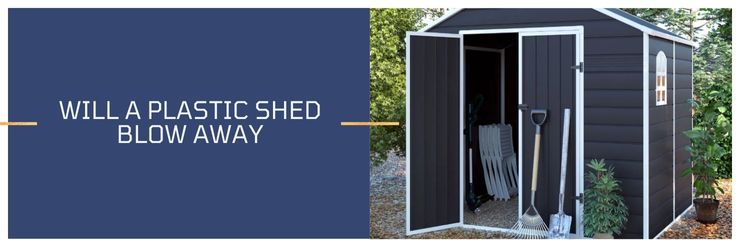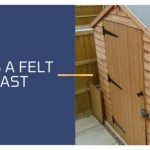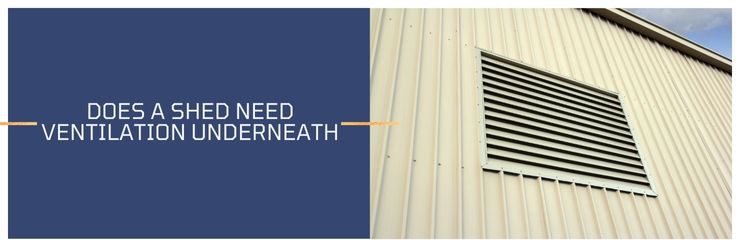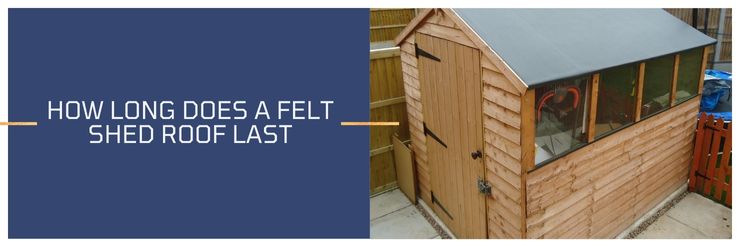When you think of a plastic shed, the first thing that comes to mind is probably how stable it is. After all, plastic is a light material, and plastic sheds are often not as solidly built as their metal or wooden counterparts. So it’s only natural to wonder: will a plastic shed blow away?
A plastic shed that’s not properly secured is likely to be blown away to some extent in strong winds.
The wind pressure can cause the shed to move, and if the shed is not properly weighted down, it can even be lifted off the ground.
But don’t worry – with the right preparation, your plastic shed can withstand even the strongest gusts of wind. Here’s what you need to know.
Will a Plastic Shed Blow Away
Plastic sheds are made from a variety of different materials, and each type of shed has its own characteristics.

For example, some plastic sheds are made with thicker walls than others. And some have special reinforcements that make them more resistant to high winds.
The most important factor in determining whether a plastic shed will blow away is the Shed’s wind rating. The wind rating is a measure of how much wind pressure the shed can withstand before it starts to move.
Most plastic sheds will withstand winds of up to 30 miles per hour without any problems. Beyond that, it really depends on the specific shed and the conditions.
Generally speaking, smaller plastic sheds are more likely to blow away than larger ones. This is because they have less surface area for the wind to grip onto, and they’re also more likely to be lighter and less stable.
Finally, how well the shed is secured to the ground will also affect its ability to withstand strong winds, and plastic sheds can last for around 7-10 years.
How Strong Does the Wind Need to Be for a Plastic Shed to Blow Away
A plastic shed is at risk of being blown away by wind speeds of over 70 miles per hour. At these speeds, the wind can easily catch the shed’s roof and lift it off of the frame. The shed walls may also start to buckle and collapse.
Strong wind speeds typically form during severe thunderstorms. These storms can produce “straight-line winds” that can reach up to 60 miles per hour.
Tornadoes, on the other hand, have much higher wind speeds that can range from 73 to 205 miles per hour. A plastic shed blows away in these conditions. So, is the plastic sheds any good? Yes, it is the cheaper and more affordable alternative.
The highest wind speeds in the United States are typically found in the Midwest and Great Plains. These areas are prone to severe thunderstorms that can produce strong winds.
Tornadoes also occur frequently in these regions. In fact, the majority of tornadoes in the United States occur in “Tornado Alley,” which is located in the Midwest and Great Plains.
Coastal areas are also susceptible to high winds. This is because the wind can pick up speed as it blows across open water. The wind can also become stronger as it moves through narrow channels.
How to Secure a Plastic Shed
If you live in an area that’s prone to high winds, it’s important to take steps to secure your plastic shed. Otherwise, you run the risk of the shed being blown away – and causing serious damage to your property.
Follow these tips to secure your plastic shed:
1. Brace the walls of the shed. Wall bracing is a common method used to reinforce buildings against high winds. To do this, you’ll need to install horizontal and vertical brackets on the inside of the shed walls. These brackets will help to keep the walls from collapsing in high winds.
2. Anchor the shed to the ground. Ground anchors are metal rods that you drive into the ground. Once they’re in place, you attach them to the shed using chains or cables.
The better option is to use multiple ground anchors to secure the shed. This will help to distribute the force of the wind and prevent the shed from being blown away.
3. Install hurricane straps. Hurricane straps are metal straps that you attach to the roof of the shed. These straps are then connected to the walls of the shed, which helps to keep the roof from being blown away in high winds.
4. Use guy wires. Guy wires are cables that you attach to the shed and then secure to the ground. These cables help to keep the shed stable in high winds by preventing it from toppling over.
5. Cover the windows and doors. Windows and doors are the weakest points of a shed. Rubber or plastic sheeting can be used to cover these openings and help to keep the shed intact in high winds.
7. Add ballast to the shed. Ballast is a weight that you add to the bottom of the shed. This weight helps to keep the shed anchored to the ground and prevents it from being blown away in high winds. Sandbags, cinder blocks, or metal weights can be used as ballast.
8. Install windbreaks. Windbreaks are walls or fences that you install around the perimeter of the shed. These barriers help to deflect the wind. Some common materials used for windbreaks include wood, metal, or concrete.
9. Trim trees and shrubs. Overhanging branches can be broken off by high winds and blown into the shed, causing damage. To prevent this from happening, trim any trees or shrubs that are near the shed.
Will the Things in my Plastic Shed Help it From Blowing Away
The objects inside your shed will not help to keep it from blowing away. In fact, they may even make the problem worse.
Heavy objects inside the shed can act like sails and catch the wind. This can cause the shed to tip over or even collapse.
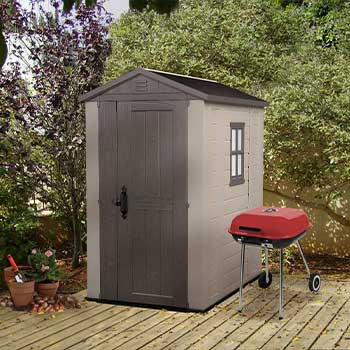
Lightweight objects inside the shed can also become projectiles in high winds and cause damage. To prevent this from happening, secure any loose items to the walls or floor of the shed using straps or bungee cords.
However, adding extra weight to the shed with purpose-built storm anchors can help to keep it in place during high winds. Examples of these anchors include concrete blocks, metal weights, or sandbags.
Conclusion
Will a plastic shed blow away? It’s possible – especially if you live in an area that’s prone to high winds. But if you take some basic precautions, you can help ensure that your shed stays put.
Most importantly, make sure you buy a shed that’s specifically designed to withstand high winds. Look for features like wind straps or hurricane clips, which can help keep your shed anchored to the ground.

